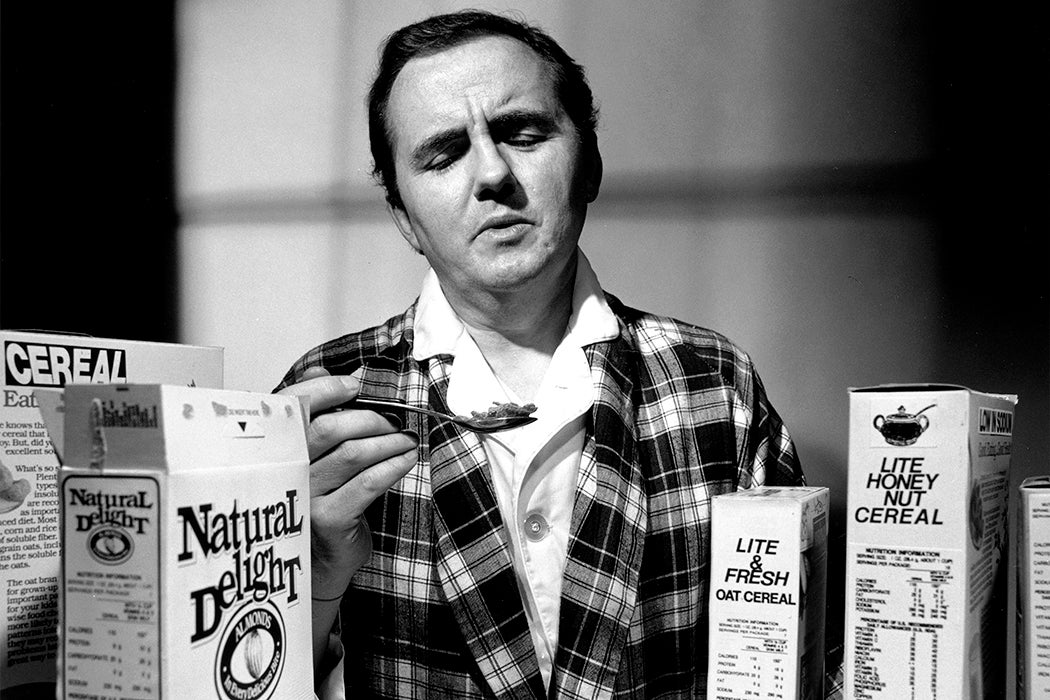
The US Food and Drug Administration (FDA) recently proposed a new rule that would change which foods can be labeled “healthy”—just the latest step in its ongoing work informing us about the food we buy and eat. As technology scholar Xaq Frohlich writes, the agency’s focus on information conveyed to consumers on food packages is the product of a circa 1970 shift in US politics: away from direct regulation of corporate behavior and toward the empowerment of consumers to influence companies using their market power.
In the beginning, explains Frohlich, the FDA’s central mission when it came to food was to make sure that products were what they were claimed to be. The 1938 Federal Food, Drug and Cosmetic Act called on the agency to develop standards for all mass-produced foods using a system that began with generic “recipes.” For example, it would identify a food like “tomato soup” and specify what ingredients it could include and in what ranges, leaving companies some room to develop their own versions. Foods that chose ingredients outside the standard recipe were slapped with the punitive “imitation” label.
As food companies introduced increasingly complex foods, regulation became trickier. So-called diet foods, using artificial sweeteners, and fortified products might fall afoul of FDA rules. And Americans on both the political right and left began questioning the agency’s power to control what they could eat. In 1968, California Governor Ronald Reagan was among those raising these concerns, defending vitamin C supplements and calling for the government to “keep its sticky labels off my pill bottles.”
And so, Frohlich writes, the FDA turned to interventions designed to empower consumers. In 1973, it curtailed the use of the “imitation” label, writing that it’s not the agency’s job “to attempt to arbitrate between the likes and dislikes of different individuals.” At the same time, it introduced voluntary nutrition labeling, requiring that any company that wanted to advertise its food based on health benefits include a nutrition panel on the label.
Over the next two decades, this looser approach allowed a proliferation of all sorts of new “diet” and “health” foods, many of which skirted the limits of the law in making advertising claims about their disease-fighting powers. To address the many confusing claims that greeted shoppers at the supermarket, in the early 1990s the FDA began requiring that all packaged food bear a standardized Nutrition Facts label. This was meant to be not just a source of information but an educational tool—it included the now-familiar “% daily value” column based on the US Department of Agriculture’s estimates of how much of various nutrients a roughly average American should eat.
“Part of its power was as a government brand to influence consumers at a subconscious level to be aware that, like the label, nutrition was everywhere,” Frohlich writes.
As CBS Nightly News reported in 1994, the label was “designed to make experts out of everyone.” How well that worked when it comes to actually improving Americans’ health remains a subject of debate today.
Support JSTOR Daily! Join our new membership program on Patreon today.
"come" - Google News
October 23, 2022 at 07:19PM
https://ift.tt/lAwkyE9
Where Do Nutrition Labels Come From? - JSTOR Daily
"come" - Google News
https://ift.tt/kueC1N9
Shoes Man Tutorial
Pos News Update
Meme Update
Korean Entertainment News
Japan News Update
Bagikan Berita Ini














0 Response to "Where Do Nutrition Labels Come From? - JSTOR Daily"
Post a Comment